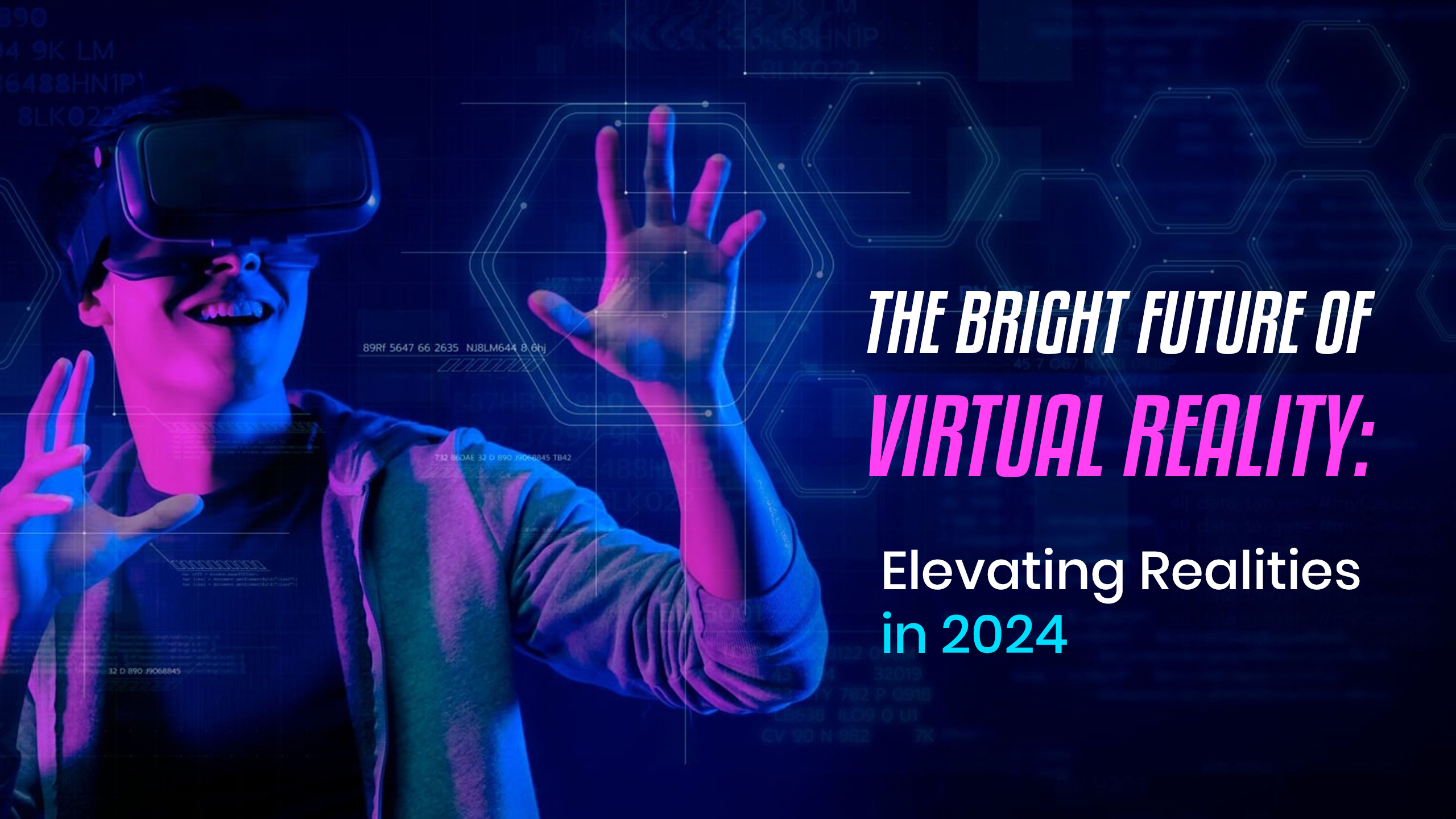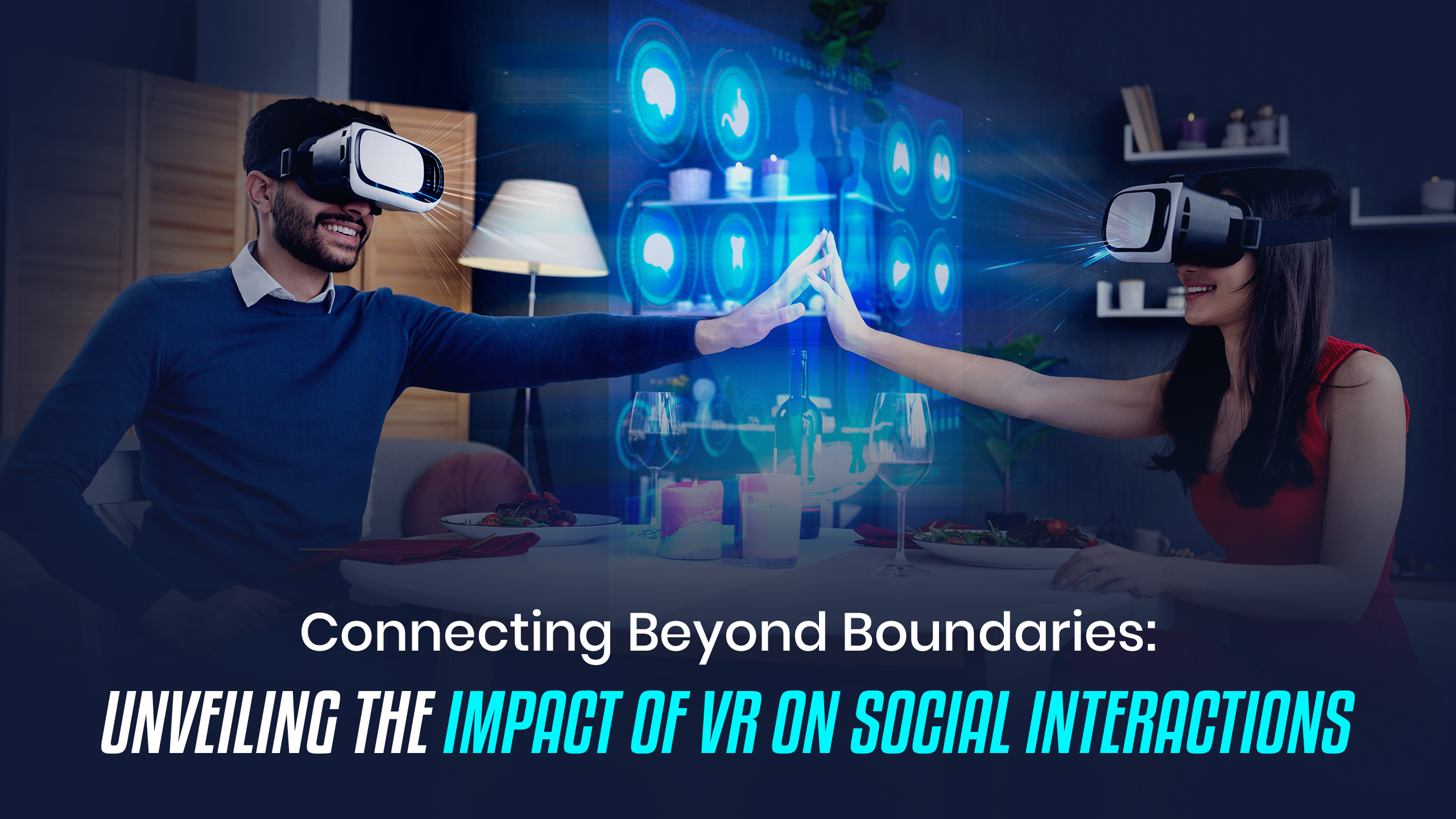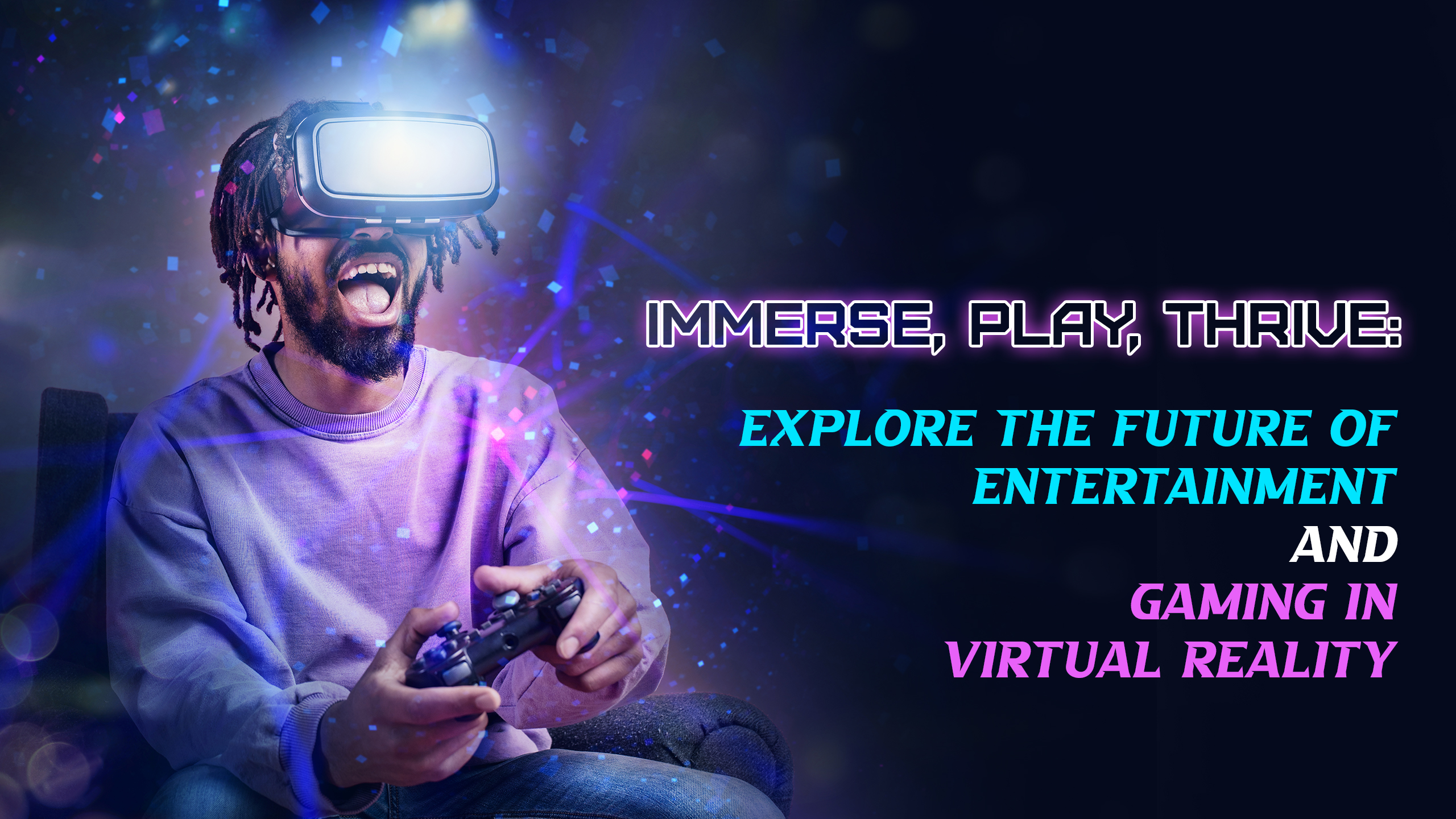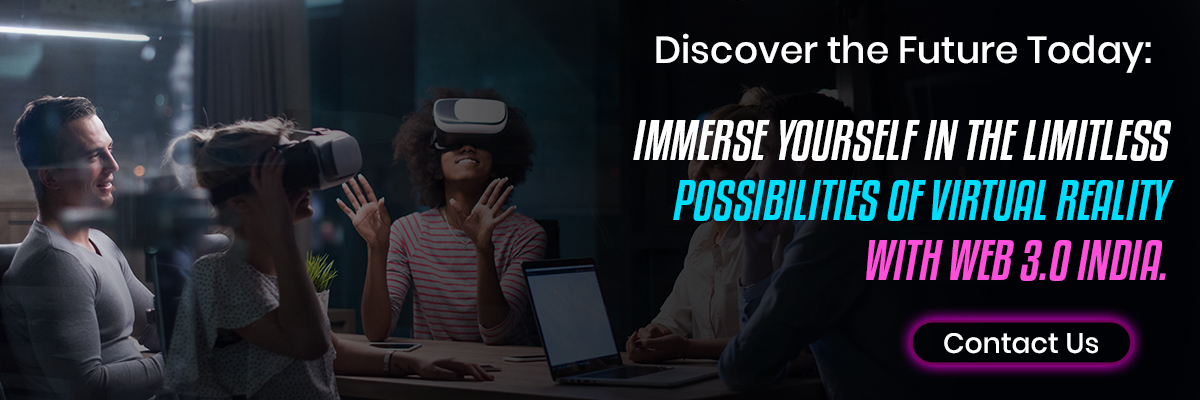Introduction
Future of Virtual Reality
The Future of Virtual Reality (VR) extends beyond its role as a technological innovation, now positioned to reshape our perception of reality. At the cusp of a new era, the future of VR unfolds as a dynamic landscape, erasing the lines between the physical and the virtual to create a seamless experience.
The evolution of VR technology has been nothing short of extraordinary. What was once confined to the realms of science fiction has now become an integral part of our present and a catalyst for shaping the future. From immersive gaming experiences to applications in healthcare, education, and beyond, VR has proven its versatility and potential.
Importance of Exploring Advancements in VR Technology
In this exploration of the future of virtual reality, it becomes crucial to understand the significance of staying abreast of technological advancements. As VR continues to weave itself into the fabric of various industries, from entertainment to business and education, it becomes a driving force behind innovation and progress.
Current State of Virtual Reality
“Present” in the Future of Virtual Reality
In examining the present landscape of Virtual Reality (VR), it’s evident that we’re standing at a pivotal moment in technological evolution. The immersive experiences offered by VR are no longer confined to the realm of speculation—they’re here, now, shaping the way we interact with and perceive the world around us.
As we navigate this evolving terrain, various industries are leveraging VR to enhance everything from entertainment to healthcare and education. The technology’s ability to transport users to virtual realms, fostering a sense of presence and engagement, marks a significant milestone in the ongoing narrative of the future of virtual reality.
Recent Advancements in VR Technology Shaping the Future
The trajectory of VR’s future is intricately tied to the rapid advancements in technology. Recent breakthroughs have not only improved the visual and auditory aspects of VR but have also addressed issues like motion sickness, making the experience more accessible and enjoyable.
From the refinement of hardware to the development of more sophisticated software, these advancements signal a trajectory toward a future where VR seamlessly integrates into our daily lives. The ongoing innovations in haptic feedback, realistic simulations, and improved user interfaces are paving the way for a future where the line between the virtual and the real becomes increasingly indistinguishable.
Emergence of the Metaverse and Future of Virtual Reality
Defining the Metaverse and Its Role
The concept of the Metaverse has emerged as a cornerstone in shaping the future of Virtual Reality (VR). Defined as a collective virtual shared space, the Metaverse goes beyond traditional VR experiences, creating interconnected digital worlds where users can interact in real-time. It is not merely an extension of the internet but a new dimension of shared immersive experiences.
As we peer into the future, the Metaverse stands as a bridge between the physical and virtual realms. Its role in the future of virtual reality is transformative, offering a space for unprecedented collaboration, social interaction, and even economic activities that transcend the limitations of the physical world.
Historical Context and Development
To understand the full scope of virtual reality, it’s essential to explore the historical context, development and the future of Metaverse. Rooted in science fiction and cyberpunk literature, the idea of a digital universe where people can engage with each other and virtual environments has long captured the imagination.
Recent years have witnessed significant strides in turning this vision into reality. Technological advancements, coupled with the increasing demand for immersive experiences, have propelled the development of the Metaverse into the forefront of discussions about the future of virtual reality.
Impact on Social Interactions
Virtual Communities and Social Experiences
The future of virtual reality extends its influence beyond the individual, reaching into the realm of social interactions. Virtual communities are becoming vibrant spaces where people can connect, communicate, and collaborate in ways previously unimaginable. Whether it’s attending virtual events, sharing experiences, or creating digital avatars, VR is redefining the social landscape.
As we peer into the future, the impact on social interactions is profound. Virtual reality offers a platform for forging connections that transcend geographical boundaries. From business meetings to social gatherings, the immersive nature of VR enhances the sense of presence, making interactions more meaningful and authentic.
Anticipated Implications for Relationships and Communication
Anticipating the future of virtual reality prompts a reflection on its potential implications for relationships and communication. The ability to share virtual spaces can bring people closer together, fostering a sense of togetherness in a digital environment. However, it also raises questions about the dynamics of communication, the blurring of online and offline personas, and the challenges of maintaining genuine connections in a virtual landscape.
Business and Economy
Virtual Commerce and E-Commerce
In the unfolding future of virtual reality, the business and economic landscape undergoes a profound transformation. Virtual Commerce, an integral component of this evolution, reshapes the traditional concept of brick-and-mortar stores. Virtual storefronts and immersive shopping experiences redefine how consumers interact with products and services.
E-commerce, already a formidable force in the digital era, takes on new dimensions within the virtual realm. The integration of VR into online shopping enhances the customer experience, allowing users to explore products in a three-dimensional space, virtually try before they buy, and engage in interactive purchasing journeys.
Job Opportunities and Economic Shifts
As the future of virtual reality takes center stage, it brings with it a surge in job opportunities and economic shifts. Industries ranging from design and development to content creation for virtual experiences experience unprecedented growth. Job roles evolve to accommodate the demands of this burgeoning sector, creating a demand for skills in virtual reality programming, design, and immersive content creation.
Moreover, economic landscapes witness shifts as virtual reality introduces new revenue streams. From virtual real estate to the sale of virtual goods, the economic implications of VR are far-reaching. The intersection of technology and commerce propels us into a future where the boundaries between the physical and the virtual become increasingly porous.
Education and Learning in Virtual Spaces
VR in Education and Training
The future of virtual reality holds immense promise for the field of education. As technology continues to advance, VR becomes a powerful tool for immersive learning experiences. Virtual classrooms, simulations, and interactive educational content redefine traditional teaching methods, offering students an unparalleled level of engagement and understanding.
Incorporating VR into education goes beyond textbooks and lectures. It allows learners to explore historical events, dissect complex scientific concepts, and engage in lifelike simulations that mimic real-world scenarios. This transformative approach to learning not only enhances retention but also cultivates critical thinking skills and a deeper understanding of subject matter.
Potential Benefits and Challenges
As we peer into the future, it’s essential to weigh the potential benefits and challenges of integrating virtual reality into education. On one hand, the benefits include increased student engagement, accessibility to diverse learning experiences, and the ability to cater to various learning styles. On the other hand, challenges such as the need for widespread access to VR technology, concerns about screen time, and the development of appropriate content pose important considerations.
Entertainment and Gaming
Evolution of Gaming in the Metaverse
The future of virtual reality intersects seamlessly with the realm of entertainment and gaming, propelling it into a new era. The evolution of gaming within the Metaverse promises an unprecedented level of immersion and interaction. Virtual worlds, once confined to the pixels of a screen, now extend beyond, allowing players to step into alternate realities and experience games in ways previously unimaginable.
The gaming industry, always at the forefront of technological innovation, embraces VR to create more realistic and captivating experiences. From virtual reality arcades to fully immersive gaming environments, the line between the digital and physical worlds blurs, ushering in a future where players aren’t just controlling characters—they’re becoming a part of the game itself.
Immersive Entertainment Experiences
As we gaze into the future of virtual reality in entertainment, the concept of immersive experiences takes center stage. Concerts, movies, and live events transition into virtual spaces, providing audiences with front-row seats from the comfort of their homes. The immersive nature of VR not only enhances the viewing experience but also opens up new possibilities for storytelling and creative expression.
Ethical and Privacy Considerations
Navigating Ethical Challenges
As we navigate the future of virtual reality, it becomes imperative to address the ethical considerations inherent in this transformative technology. The immersive nature of VR raises questions about digital ethics, ranging from the creation of realistic virtual environments to the potential impact on mental well-being. Ethical challenges encompass issues such as consent, the representation of individuals in virtual spaces, and the responsible use of VR for various applications.
Balancing Innovation with Ethical Considerations
In the dynamic landscape of the future of virtual reality, balancing innovation with ethical considerations is paramount. Privacy concerns, data security, and the potential misuse of VR technologies require thoughtful reflection and proactive measures. As VR becomes more integrated into daily life, ensuring ethical standards and protecting user privacy are pivotal in shaping a responsible and sustainable future.
Conclusion
In concluding our exploration of virtual reality, we find ourselves standing at the crossroads of innovation and boundless possibilities. From redefining social interactions to reshaping the way we learn, work, and entertain ourselves, virtual reality has emerged as a transformative force.
In this immersive landscape, the future of virtual reality beckons us to navigate the delicate balance between innovation and responsibility. As we anticipate the next chapter in this evolving narrative, one thing is clear: the world of virtual reality is not just a glimpse into the future—it’s a transformative journey that invites us to reimagine reality itself. The stage is set for a future where the virtual and the real coexist, offering exciting opportunities and, perhaps, a glimpse into the limitless potential of human imagination.







